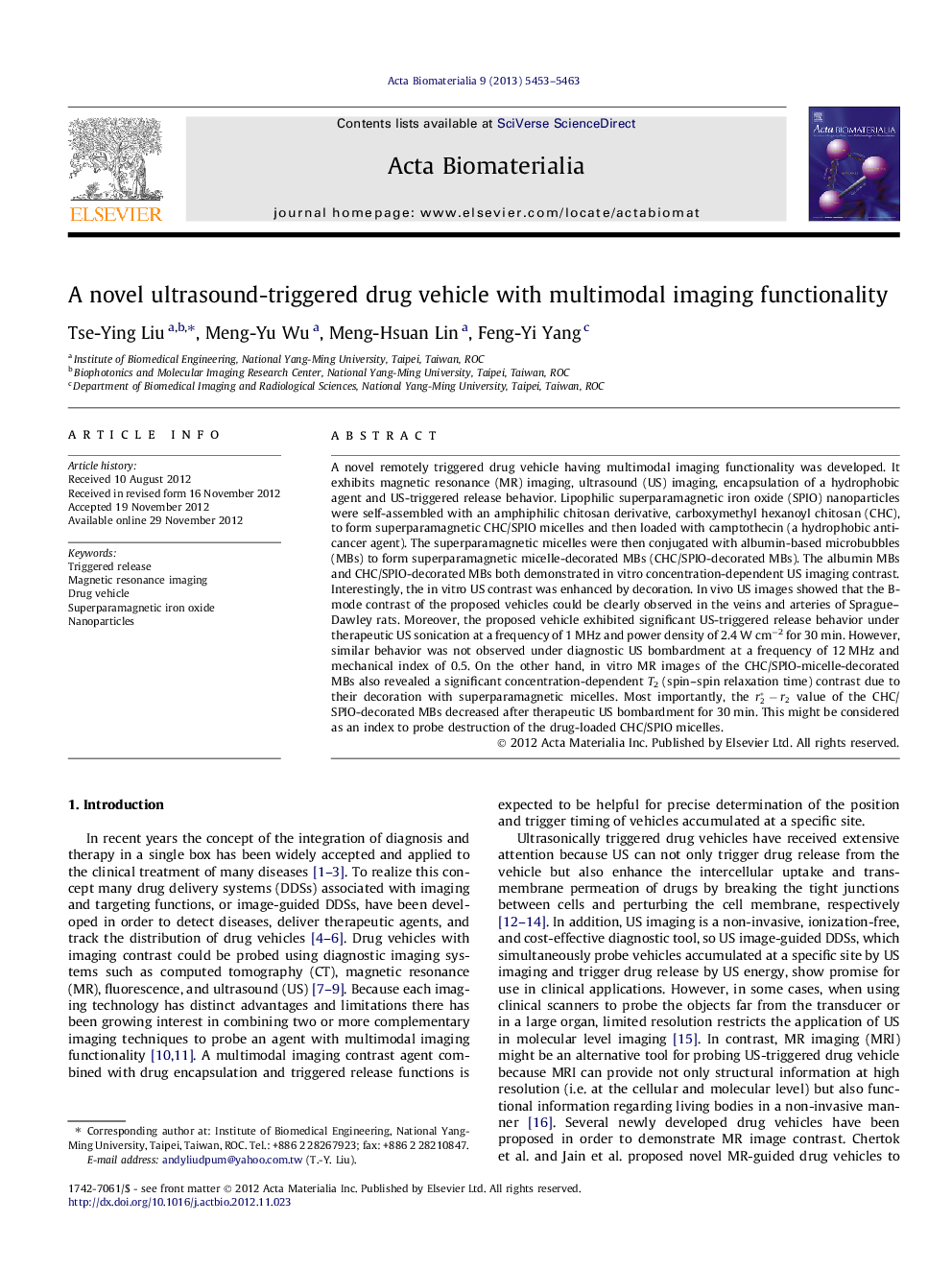| Article ID | Journal | Published Year | Pages | File Type |
|---|---|---|---|---|
| 10159974 | Acta Biomaterialia | 2013 | 11 Pages |
Abstract
A novel remotely triggered drug vehicle having multimodal imaging functionality was developed. It exhibits magnetic resonance (MR) imaging, ultrasound (US) imaging, encapsulation of a hydrophobic agent and US-triggered release behavior. Lipophilic superparamagnetic iron oxide (SPIO) nanoparticles were self-assembled with an amphiphilic chitosan derivative, carboxymethyl hexanoyl chitosan (CHC), to form superparamagnetic CHC/SPIO micelles and then loaded with camptothecin (a hydrophobic anticancer agent). The superparamagnetic micelles were then conjugated with albumin-based microbubbles (MBs) to form superparamagnetic micelle-decorated MBs (CHC/SPIO-decorated MBs). The albumin MBs and CHC/SPIO-decorated MBs both demonstrated in vitro concentration-dependent US imaging contrast. Interestingly, the in vitro US contrast was enhanced by decoration. In vivo US images showed that the B-mode contrast of the proposed vehicles could be clearly observed in the veins and arteries of Sprague-Dawley rats. Moreover, the proposed vehicle exhibited significant US-triggered release behavior under therapeutic US sonication at a frequency of 1Â MHz and power density of 2.4Â WÂ cmâ2 for 30Â min. However, similar behavior was not observed under diagnostic US bombardment at a frequency of 12Â MHz and mechanical index of 0.5. On the other hand, in vitro MR images of the CHC/SPIO-micelle-decorated MBs also revealed a significant concentration-dependent T2 (spin-spin relaxation time) contrast due to their decoration with superparamagnetic micelles. Most importantly, the r2â-r2 value of the CHC/SPIO-decorated MBs decreased after therapeutic US bombardment for 30Â min. This might be considered as an index to probe destruction of the drug-loaded CHC/SPIO micelles.
Keywords
Related Topics
Physical Sciences and Engineering
Chemical Engineering
Bioengineering
Authors
Tse-Ying Liu, Meng-Yu Wu, Meng-Hsuan Lin, Feng-Yi Yang,
